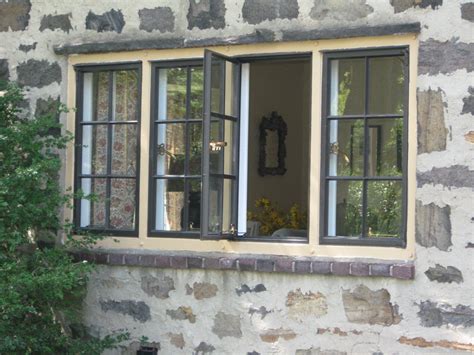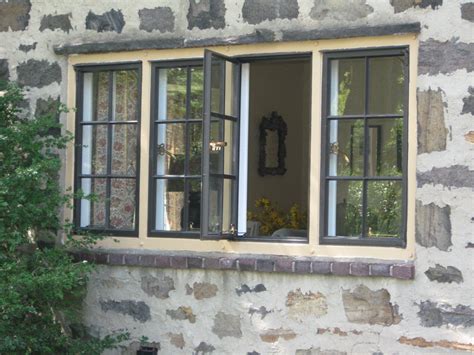1960s house with metal windows Reproducing historic wood windows involves dealing with many design . $7.99
0 · types of windows in historic homes
1 · old metal windows
2 · old house windows
3 · metal windows for historic buildings
4 · history of metal windows
5 · historical metal windows examples
6 · historic aluminum windows
7 · 1950s double hung windows
Lorell File Cabinet, Black . 14.3" x 18" x 24.5" - 2 x Drawer(s) for File - Locking .
“We started making little hopper-vent aluminum windows for bathrooms and glass block walls in the 1940s and ‘50s,” says Kurtis Suellentrop of Winco Window Company in St. .

steel city square box
The Resilience of Steel Windows and Doors. Steel windows and doors, with .Reproducing historic wood windows involves dealing with many design .Lustron houses are prefabricated enameled steel houses developed in the post-World War II era United States in response to the shortage of homes for returning G.I.s by Chicago industrialist and inventor Carl Strandlund. Considered low-maintenance and extremely durable, they were expected to attract modern families who might not have the time for, or interest in, repairing and painting .

types of windows in historic homes
Older historic houses and smaller commercial buildings usually have awning windows in the basement or in stairwells that have limited space. Commercial buildings such as warehouses and industrial buildings often had steel versions . A look at historic aluminum windows, restoration and Tru Seal Windows. Through proper maintenance, cyclical cleanings, necessary repairs, and storm windows, a historic .
Historic wood windows are one of the most important parts of an old home. Each one is unique and can be made efficient with a little care.Houses featured oak beams, pebble-dashing and large bay windows. They were much criticised by the architectural establishment of the time, but were what the people liked. Through the fifties, and increasingly in the sixties, fashions . We are beginning to consider mid-20th century windows made in the 1950s and 1960s. These later windows are fundamentally different than earlier windows. Many 1950s and . Guttering and downpipes typically cast iron or asbestos, with plastic accessible by the late 1960s. Windows: Galvanised metal windows become very popular, as do timber .
old metal windows
old house windows
The featureless original Crittal steel window (not to mention cold and a real condensation producer) is replaced with plain white PVC-U, and with it comfort style and security are added .

The windows you have are called Primed Narroline and what you need are called balancers. There are two in each window, and they should always be replaced in pairs. With .
“We started making little hopper-vent aluminum windows for bathrooms and glass block walls in the 1940s and ‘50s,” says Kurtis Suellentrop of Winco Window Company in St. Louis, MO, “but I would say aluminum windows have only been common in commercial buildings since the 1960s.”
Lustron houses are prefabricated enameled steel houses developed in the post- World War II era United States in response to the shortage of homes for returning G.I.s by Chicago industrialist and inventor Carl Strandlund.Older historic houses and smaller commercial buildings usually have awning windows in the basement or in stairwells that have limited space. Commercial buildings such as warehouses and industrial buildings often had steel versions of awning windows. A look at historic aluminum windows, restoration and Tru Seal Windows. Through proper maintenance, cyclical cleanings, necessary repairs, and storm windows, a historic aluminum window can perform as well as a historic wood window and its modern counterparts. Historic wood windows are one of the most important parts of an old home. Each one is unique and can be made efficient with a little care.
Houses featured oak beams, pebble-dashing and large bay windows. They were much criticised by the architectural establishment of the time, but were what the people liked. Through the fifties, and increasingly in the sixties, fashions changed. We are beginning to consider mid-20th century windows made in the 1950s and 1960s. These later windows are fundamentally different than earlier windows. Many 1950s and 60s windows are worth taking care of, and some of them are now even considered historic.
Guttering and downpipes typically cast iron or asbestos, with plastic accessible by the late 1960s. Windows: Galvanised metal windows become very popular, as do timber casement windows and horizontal sliding sashes in aluminium towards the end of the period. Most windows were single glazed.The featureless original Crittal steel window (not to mention cold and a real condensation producer) is replaced with plain white PVC-U, and with it comfort style and security are added in abundance. These pictures are of the same 1962 built semi-detached pair of chalet style houses. See another example of a ‘plant-on’ bow/bay
The windows you have are called Primed Narroline and what you need are called balancers. There are two in each window, and they should always be replaced in pairs. With windows that age you will probably break the lower right jamb liner while removing, so I would figure on replacing those as well. “We started making little hopper-vent aluminum windows for bathrooms and glass block walls in the 1940s and ‘50s,” says Kurtis Suellentrop of Winco Window Company in St. Louis, MO, “but I would say aluminum windows have only been common in commercial buildings since the 1960s.”Lustron houses are prefabricated enameled steel houses developed in the post- World War II era United States in response to the shortage of homes for returning G.I.s by Chicago industrialist and inventor Carl Strandlund.
Older historic houses and smaller commercial buildings usually have awning windows in the basement or in stairwells that have limited space. Commercial buildings such as warehouses and industrial buildings often had steel versions of awning windows.
metal windows for historic buildings
A look at historic aluminum windows, restoration and Tru Seal Windows. Through proper maintenance, cyclical cleanings, necessary repairs, and storm windows, a historic aluminum window can perform as well as a historic wood window and its modern counterparts. Historic wood windows are one of the most important parts of an old home. Each one is unique and can be made efficient with a little care.Houses featured oak beams, pebble-dashing and large bay windows. They were much criticised by the architectural establishment of the time, but were what the people liked. Through the fifties, and increasingly in the sixties, fashions changed. We are beginning to consider mid-20th century windows made in the 1950s and 1960s. These later windows are fundamentally different than earlier windows. Many 1950s and 60s windows are worth taking care of, and some of them are now even considered historic.
Guttering and downpipes typically cast iron or asbestos, with plastic accessible by the late 1960s. Windows: Galvanised metal windows become very popular, as do timber casement windows and horizontal sliding sashes in aluminium towards the end of the period. Most windows were single glazed.
The featureless original Crittal steel window (not to mention cold and a real condensation producer) is replaced with plain white PVC-U, and with it comfort style and security are added in abundance. These pictures are of the same 1962 built semi-detached pair of chalet style houses. See another example of a ‘plant-on’ bow/bay
history of metal windows
We’ve taken the 90’s foiled statement lip and reinvented it with the lustrous look of liquified metal; creating a new form of wearable multifaceted color like you’ve never seen before. Melted Metal comfortably coats lips in bursts of rich, glazed, metallic color that melts on and makes a .
1960s house with metal windows|metal windows for historic buildings